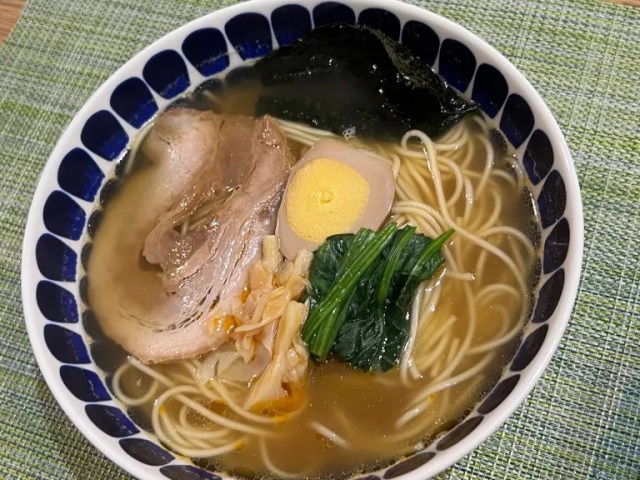
Taste-testing kyoseiten ramen noodles.
Walking around Japan, you may sometimes come across a station plaza or other event space with banners announcing that they’re having a kyoseiten. For example, here’s a photo of a kyoseiten that was going on last week in downtown Tokyo’s Shinjuku Station, the closest station to SoraNews24 headquarters.
▼ 矯正展 = kyoseiten
Kyoseiten directly translates to “correction exhibition.” However, the items on display, and being sold, aren’t refurbished products or factory seconds that have had their defects addressed. No, in the case of kyoseiten,“correction” is meant in the same sense as when talking about a correctional institute. In other words, all of the items are made by inmates as part of a prison work and education program.
The most common things you’ll find at a kyoseiten are leather and woodworking items such as wallets, shoulder bags, chairs, and chopsticks. Generally, the craftsmanship is beyond that of pure amateurs and students in shop classes, but not on the level of high-end professional artisans. The inmate-made products tend to be simple in design with only basic features, but not without a certain straightforward, rustic appeal.
At the kyoseiten we stumbled across in Shinjuku, tables and racks full of bags took up most of the floor space. As we looked around, though, we spotted something we don’t ever remember seeing at a kyoseiten: ramen noodles made by convicts.
The packs of dry ramen noodles were arranged in little piles, and selling for just 200 yen (US$1.40), with three servings per packet. According to the package, they contained chukamen, straight, thin noodles like the ones most commonly used for noodle soups in China, but also popular with Japanese-style ramen broth and toppings. In addition to standard ramen, the back of the package said that the noodles can be also be used for making hiyashi chuka (a cold noodle dish with minimal broth), tsukemen (in which the noodles are served by themselves and dipped into a separate bowl of broth before each bite), and even yakisoba (ramen noodles stir-fried with meat and vegetables). The packaging also told us that these noodles were made by inmates at the prison located in Konan Ward in Yokohama, Kanagawa Prefecture.
▼ 中華麺 = chukamen
To be honest, we weren’t sure what to expect in terms of quality with our prison-made noodles. On the one hand, dried ramen isn’t exactly gourmet, but it’s also a section of the noodle market where the competition is intense, since it includes instant and cup ramen. Competition, as they say, improves the breed, and with multiple major Japanese companies constantly researching and developing new recipes and techniques in an effort to make their ramen more satisfying than their rivals’, it wouldn’t be a shock if the budget and resources afforded to a prison work program limited it to churning out some less-than-stellar noodles, especially when they’re selling for just 200 yen a pack.
That price, it turns out, doesn’t quite tell the whole story, however. When we opened the package of prison noodles, we’d been expecting there to be some sort of powdered or liquid soup base with which to make the broth, since they’re usually included in dry ramen packs like this. Inside of our pack of prison noodles, though, were noodles, and nothing else.
In a way, this turned out to be a blessing in disguise. In our pantry we had a pack of Marutai Ramen, a popular and tasty brand of dry ramen noodles made by law-abiding private-sector citizens, and which come with enough broth base for multiple servings.
This let us prepare two bowls of ramen, one using the prison noodles, and one using the Marutai ones, but with the same broth for both. We also kept the toppings we added the same. The only difference was the noodles, and since Marutai’s are also thin and straight, we’d eliminated all possible differences except for the quality of the noodles themselves, which would let us see how the prisoner-made ones measured up.
The prison noodle packaging said to cook them for three to four minutes (we split the difference and cooked them for three and a half), and then to rinse them in cold water. Once we had both bowls of ramen prepared, we lined them up side by side. Can you tell which is which?
The prison-made noodles are…
…
…
…the ones in the bowl on the left.
Really, they looked just as delicious as the Marutai ones, so much so that we had to make a mental note of which was which, so that we wouldn’t forget and mix them up.
But the real thing we wanted to know is how these noodles tasted. We took a bit of the prison noodles, and…it was ramen. There was nothing strange, shocking, or off about them – just good, satisfying noodles.
That’s not to say that they were prefect, though. Like we said, the directions said to cook the noodles for three to four minutes, and we went with three and a half. After eating a bowl, though, we’re pretty sure they’d have been better if we’d stopped at three minutes flat. Three and a half minutes had left them on the overcooked and overly soft side, and they didn’t quite have that al dente sensation of firmness giving way to flexibility as you bite through, which is really what ramen connoisseurs like best in thin, straight noodles like these. That said, the prison noodles tasted just fine, and perfect texture really is something that’s hard to achieve when starting with dry ramen.
Turning to the Marutai noodles, we found their texture and flavor to be better than the prison noodles, but only slightly. So even though the prison noodles aren’t perfect, they’re still a perfectly viable option for a quick, hot meal.
Really, the only major drawback is that the prison noodles don’t come with any broth stock. Thinking back to what the packaging said, though, it recommends the noodles for use as ramen, hiyashi chuka, tsukemen, and yakisoba, all of which use different types of broth or sauce, so maybe that’s why there’re no such seasonings included, because they don’t know exactly what you’re going to use it for. And true enough, we haven’t decided how to use our remaining two servings of prison noodles either, but we have a hunch that they won’t let us down.
Photos © SoraNews24
● Want to hear about SoraNews24’s latest articles as soon as they’re published? Follow us on Facebook and Twitter!
[ Read in Japanese ]

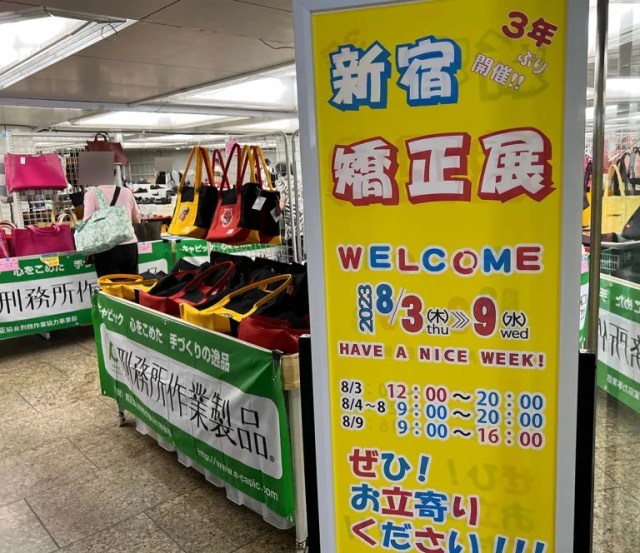
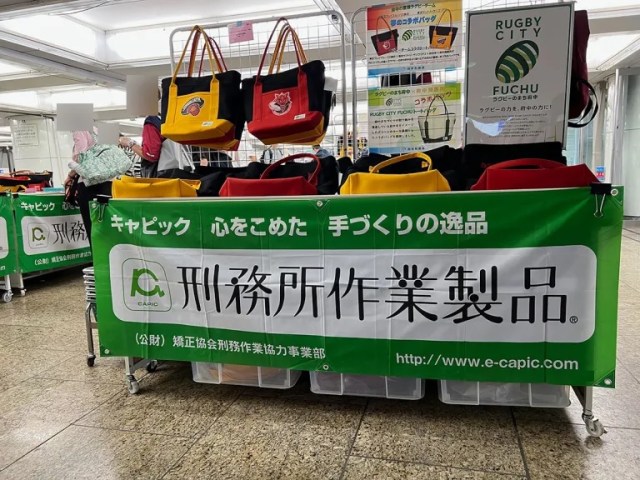
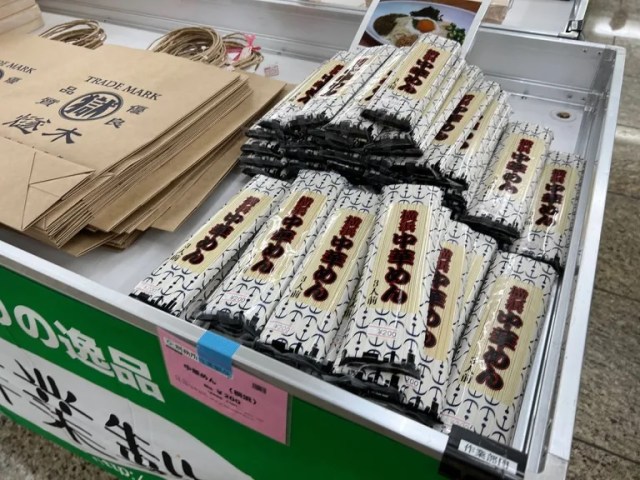

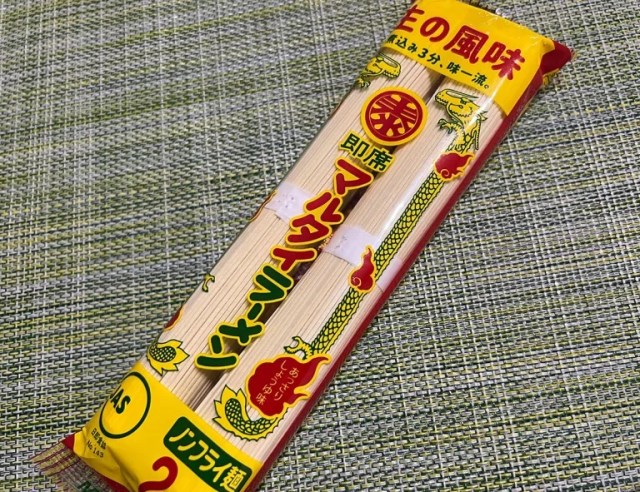
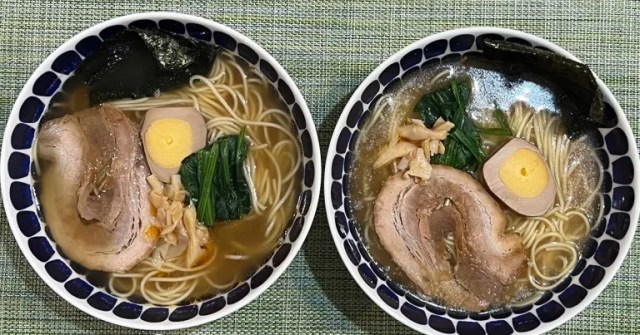
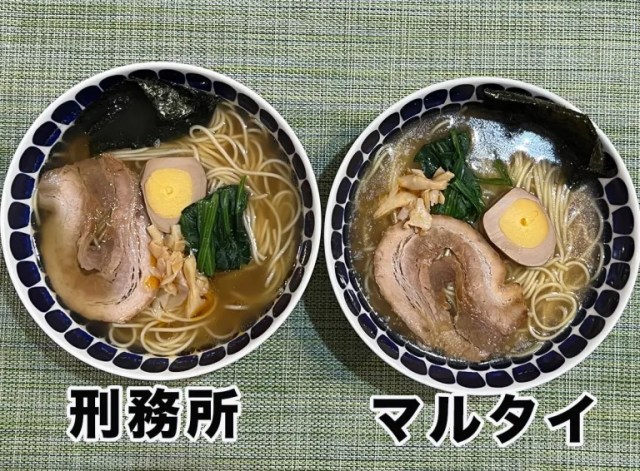
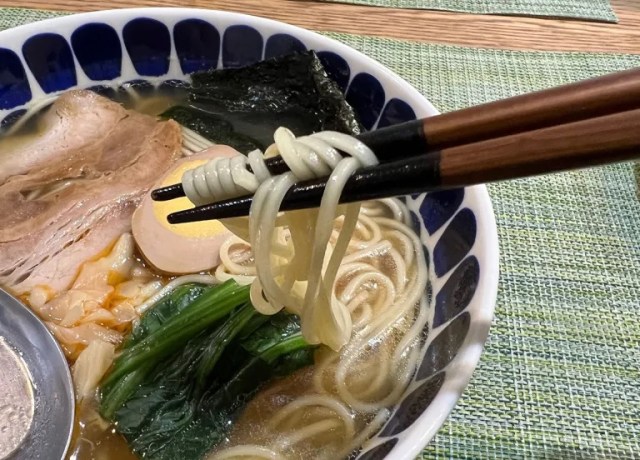
 Tokyo ramen restaurant’s made-to-order noodles are only the beginning of its awesomeness
Tokyo ramen restaurant’s made-to-order noodles are only the beginning of its awesomeness Tokyo’s new frozen ramen vending machines are brain-breakingly amazing【Taste test】
Tokyo’s new frozen ramen vending machines are brain-breakingly amazing【Taste test】 Pitch-black Black Belt udon noodles are a visual roundhouse, but do they taste good?【Taste test】
Pitch-black Black Belt udon noodles are a visual roundhouse, but do they taste good?【Taste test】 Ichiran ramen lucky bag gives us everything we need to enjoy tonkotsu noodles at home
Ichiran ramen lucky bag gives us everything we need to enjoy tonkotsu noodles at home What does vegan ramen taste like? We try Veggie Brown Rice Ramen
What does vegan ramen taste like? We try Veggie Brown Rice Ramen Foreigner’s request for help in Tokyo makes us sad for the state of society
Foreigner’s request for help in Tokyo makes us sad for the state of society Should you add tartar sauce to Japanese curry rice? CoCo Ichi makes diners an unusual offer
Should you add tartar sauce to Japanese curry rice? CoCo Ichi makes diners an unusual offer Japanese city loses residents’ personal data, which was on paper being transported on a windy day
Japanese city loses residents’ personal data, which was on paper being transported on a windy day Harajuku Station’s beautiful old wooden building is set to return, with a new complex around it
Harajuku Station’s beautiful old wooden building is set to return, with a new complex around it Seaside scenery, history, and so many desserts on Yokohama’s Akai Kutsu【Japan Loop Buses】
Seaside scenery, history, and so many desserts on Yokohama’s Akai Kutsu【Japan Loop Buses】 Red light district sushi restaurant in Tokyo shows us just how wrong we were about it
Red light district sushi restaurant in Tokyo shows us just how wrong we were about it Limited-edition Carbonara Udon will anger noodle purists and pasta lovers 【Taste test】
Limited-edition Carbonara Udon will anger noodle purists and pasta lovers 【Taste test】 Akihabara pop-up shop sells goods made by Japanese prison inmates
Akihabara pop-up shop sells goods made by Japanese prison inmates Japan’s massive matcha parfait weighs 6 kilos, contains hidden surprises for anyone who eats it
Japan’s massive matcha parfait weighs 6 kilos, contains hidden surprises for anyone who eats it French Fries Bread in Tokyo’s Shibuya becomes a hit on social media
French Fries Bread in Tokyo’s Shibuya becomes a hit on social media McDonald’s new Happy Meals offer up cute and practical Sanrio lifestyle goods
McDonald’s new Happy Meals offer up cute and practical Sanrio lifestyle goods Japanese ramen restaurants under pressure from new yen banknotes
Japanese ramen restaurants under pressure from new yen banknotes Studio Ghibli releases new action figures featuring Nausicaä of the Valley of the Wind characters
Studio Ghibli releases new action figures featuring Nausicaä of the Valley of the Wind characters New private rooms on Tokaido Shinkansen change the way we travel from Tokyo to Kyoto
New private rooms on Tokaido Shinkansen change the way we travel from Tokyo to Kyoto Tokyo Tsukiji fish market site to be redeveloped with 50,000-seat stadium, hotel, shopping center
Tokyo Tsukiji fish market site to be redeveloped with 50,000-seat stadium, hotel, shopping center Beautiful Ghibli sealing wax kits let you create accessories and elegant letter decorations【Pics】
Beautiful Ghibli sealing wax kits let you create accessories and elegant letter decorations【Pics】 Studio Ghibli releases Kiki’s Delivery Service chocolate cake pouches in Japan
Studio Ghibli releases Kiki’s Delivery Service chocolate cake pouches in Japan New definition of “Japanese whiskey” goes into effect to prevent fakes from fooling overseas buyers
New definition of “Japanese whiskey” goes into effect to prevent fakes from fooling overseas buyers Our Japanese reporter visits Costco in the U.S., finds super American and very Japanese things
Our Japanese reporter visits Costco in the U.S., finds super American and very Japanese things All-you-can-drink Starbucks and amazing views part of Tokyo’s new 170 meter-high sky lounge
All-you-can-drink Starbucks and amazing views part of Tokyo’s new 170 meter-high sky lounge More foreign tourists than ever before in history visited Japan last month
More foreign tourists than ever before in history visited Japan last month New Pokémon cakes let you eat your way through Pikachu and all the Eevee evolutions
New Pokémon cakes let you eat your way through Pikachu and all the Eevee evolutions Disney princesses get official manga makeovers for Manga Princess Cafe opening in Tokyo
Disney princesses get official manga makeovers for Manga Princess Cafe opening in Tokyo Sales of Japan’s most convenient train ticket/shopping payment cards suspended indefinitely
Sales of Japan’s most convenient train ticket/shopping payment cards suspended indefinitely Sold-out Studio Ghibli desktop humidifiers are back so Totoro can help you through the dry season
Sold-out Studio Ghibli desktop humidifiers are back so Totoro can help you through the dry season Japanese government to make first change to romanization spelling rules since the 1950s
Japanese government to make first change to romanization spelling rules since the 1950s Ghibli founders Toshio Suzuki and Hayao Miyazaki contribute to Japanese whisky Totoro label design
Ghibli founders Toshio Suzuki and Hayao Miyazaki contribute to Japanese whisky Totoro label design Doraemon found buried at sea as scene from 1993 anime becomes real life【Photos】
Doraemon found buried at sea as scene from 1993 anime becomes real life【Photos】 Tokyo’s most famous Starbucks is closed
Tokyo’s most famous Starbucks is closed One Piece characters’ nationalities revealed, but fans have mixed opinions
One Piece characters’ nationalities revealed, but fans have mixed opinions We asked a Uniqlo employee what four things we should buy and their suggestions didn’t disappoint
We asked a Uniqlo employee what four things we should buy and their suggestions didn’t disappoint Princesses, fruits, and blacksmiths: Study reveals the 30 most unusual family names in Japan
Princesses, fruits, and blacksmiths: Study reveals the 30 most unusual family names in Japan Ramen vending machine in Tokyo satisfies noodle and gyoza cravings at any time of day or night
Ramen vending machine in Tokyo satisfies noodle and gyoza cravings at any time of day or night Which noodles, other than Okinawa soba, pair best with Okinawa soba broth?【Taste Test】
Which noodles, other than Okinawa soba, pair best with Okinawa soba broth?【Taste Test】 Ramen-flavor shaved ice is coming to Tokyo just in time for the summer heat
Ramen-flavor shaved ice is coming to Tokyo just in time for the summer heat Taste-testing Japan’s three biggest convenience stores store-brand cup ramen【Taste test】
Taste-testing Japan’s three biggest convenience stores store-brand cup ramen【Taste test】 Have you tried Tokushima ramen? No? You should (says our obsessed Japanese-language reporter)
Have you tried Tokushima ramen? No? You should (says our obsessed Japanese-language reporter) Japanese restaurant says its wonder ramen provides all the vegetables your body needs in one bowl
Japanese restaurant says its wonder ramen provides all the vegetables your body needs in one bowl How to make yoghurt ramen with instant noodles
How to make yoghurt ramen with instant noodles $100 ramen in Tokyo: Overpriced or totally worth it?
$100 ramen in Tokyo: Overpriced or totally worth it? Instant vs. Restaurant Ramen Project: Ippudo spicy miso tonkotsu battle【Taste test】
Instant vs. Restaurant Ramen Project: Ippudo spicy miso tonkotsu battle【Taste test】 The twin joys and dual sadnesses of eating ramen in the U.S.
The twin joys and dual sadnesses of eating ramen in the U.S. Cup Noodle’s Nissin releases ultra-nutritious instant ramen with “all nutrients your body needs”
Cup Noodle’s Nissin releases ultra-nutritious instant ramen with “all nutrients your body needs” We try out Nissin’s new Cup Noodle Broth Hardening Powder to see if it really works
We try out Nissin’s new Cup Noodle Broth Hardening Powder to see if it really works We visit a ramen bar in Croatia, meet a whole new version of ramen we can’t wait to make at home
We visit a ramen bar in Croatia, meet a whole new version of ramen we can’t wait to make at home Craving ramen, but can’t find decent noodles? Transform your spaghetti with this pasta hack!
Craving ramen, but can’t find decent noodles? Transform your spaghetti with this pasta hack! How to make tonkotsu ramen at home 【SoraKitchen】
How to make tonkotsu ramen at home 【SoraKitchen】
Leave a Reply